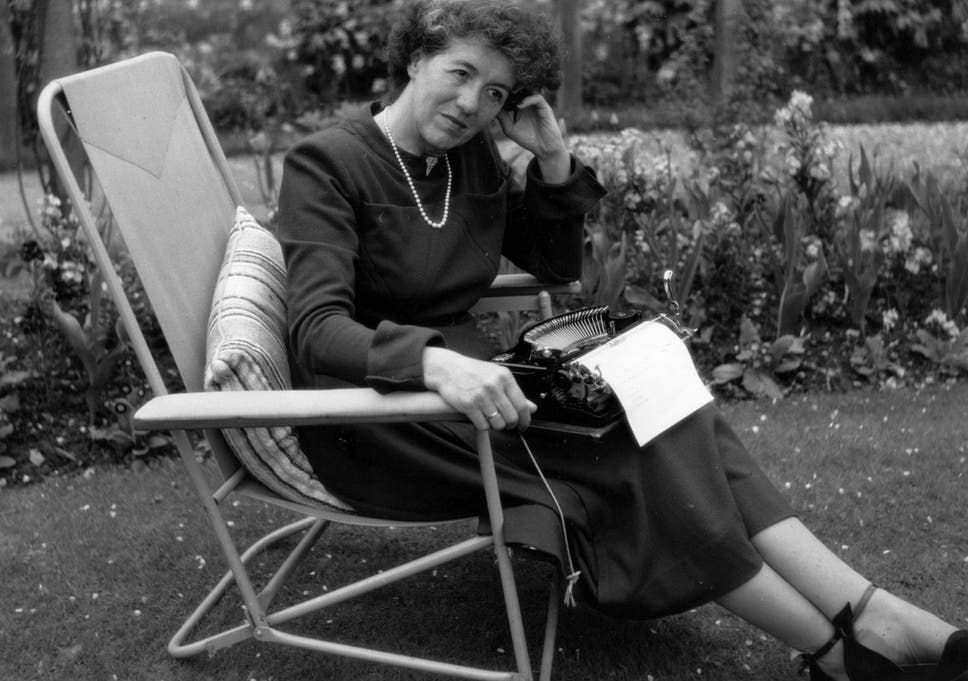
Enid Blyton, the popular children’s writer, died 50 years ago this week.
Astonishingly prolific, the author composed some 700 books between 1922, when she published her poetry collection Child Whispers, and her death in Hampstead on 28 November 1968, often rattling out 6,000 words a day at the typewriter.
She has sold more than 600 million books, which have never gone out of print, been translated into 90 languages and enjoyed a loyal following among young readers for generations, her characters from the Famous Five to Noddy capturing the imagination and inspiring a taste for adventure.
But Blyton has also been heavily criticised. The BBC refused to dramatise her output during her lifetime on the grounds she was a “second-rater”, while she has been derided for the patriarchal assumptions, snobbery and xenophobia evident in her novels and mocked as a conservative relic of a Britain that no longer exists.
And yet she endures. Her tales of youthful pluck and outdoor picnics with lashings of ginger beer might have seemed comically outmoded by the Swinging Sixties but are now read in a spirit of enormous nostalgia for mid-century Britain, the values of friendship, fairness and freedom she espoused appealing to audiences anew in more self-centred times.
Her memory has also been coloured somewhat by A Childhood at Green Hedges, the scathing memoir her daughter Imogen Smallwood wrote in 1989 in which she states: “The truth is, Enid Blyton was arrogant, insecure, pretentious, very skilled at putting difficult or unpleasant things out of her mind, and without a trace of maternal instinct. As a child, I viewed her as a rather strict authority. As an adult, I did not hate her. I pitied her.”
Imogen's daughter Sophie, Enid's granddaughter, offered a kinder assessment of Blyton’s work in 2009, telling The Guardian: “Her writing is that of an intelligent 12-year-old. In my view that’s why adults find it difficult to relate to her because she doesn’t quite have the depth; it has that childlike quality.”
Former Children’s Laureate Anne Fine has also defended her, telling BBC Radio 4 in 2008: “In times of falling reading levels and limitless other distractions, we grasp at any author who has that turn-the-page quality. And for reasons that may remain entirely mysterious to reading adults, she certainly has that.”
To mark the half-century since the writer’s death, here is our selection of some of her finest books.
10. First Term at Malory Towers (1946)
Blyton had already commenced one girls’ boarding school series in 1941 with The Twins at St Clare’s but the beginning of her Malory Towers sequence did a particularly neat job of capturing the excitement and trepidation of starting again away from home long before a certain boy wizard set out for Hogwarts.
Taking place at the epnoymous castle atop the Cornish cliffs, the story follows Darrell Rivers, whose determination to be a model pupil and grow into “a good, sound woman the world can lean on” is undermined by her combustible temper and controversies with fellow classmates.
While Blyton is seldom praised for her psychological insights, the intrigue between the students and the bullying carried out by the spoiled Gwendoline Mary Lacey certainly rings true.
9. Naughty Amelia Jane! (1939)
Although her parenting may have been attacked by Imogen, Enid's elder daughter Gillian fondly recalled the author basing her Amelia Jane novels on a large handmade doll she had given her for her third birthday.
Not all of the writer’s heroines were on the right side of the law, and, as the title suggests, Amelia Jane is a mischievous presence, playing tricks and cruel pranks on the other toys in the nursery.
While the prospect of a golliwog among the supporting cast means Amelia Jane is likely to be shunned by modern parents (the dolls have been removed from recent reissues of the Noddy books), the idea of toys coming to life continues to hold a fascination for children, as Pixar can attest.
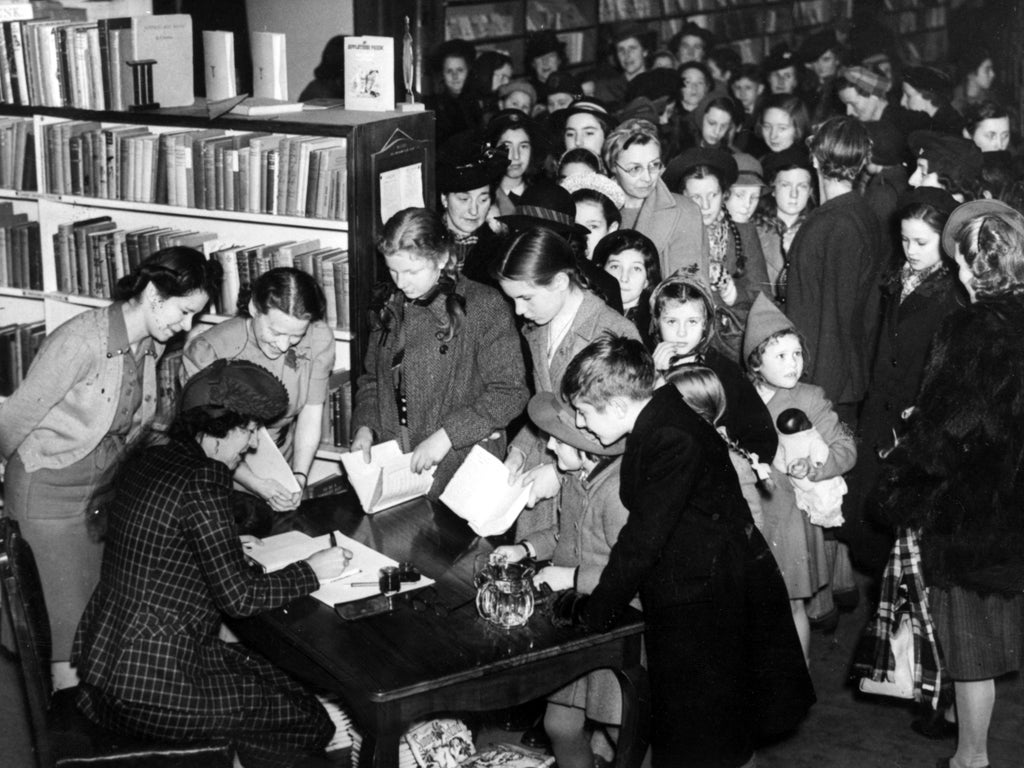
8. Mr Galliano’s Circus (1938)
This story of a lonely young boy who finds acceptance and kinship when the big top comes to town makes a nonsense of the idea the author only wrote about affluent families: Jimmy Brown’s father is out of work and depressed because he is unable to provide for his wife and son before being taken on as a handyman by the ringmaster.
Blyton captures a child’s wonder at the magic of the circus and the spectacle it brings as she recounts the blossoming friendship between Jimmy and Lotta the pony jockey, who recalls Sissy Jupe from Dickens’s Hard Times (1854).
Among the rest of the colourful cast – in a work that would be expanded to a trilogy – are Stanley the clown and Mr Tonks and Lilliput, the elephant and monkey handlers.
7. Little Noddy Goes to Toyland (1949)
Perhaps the most divisive of Blyton’s characters is also her best known.
Noddy has been reviled in some quarters, notably by the journalist Colin Welch in his article “A Parent’s Lament” from Encounter magazine in 1958, in which he described the little elf as “insipid” and said the books “contain nothing incomprehensible even to the dimmest child, nothing mysterious or stimulating. They never suggest new and exciting fields to conquer.”
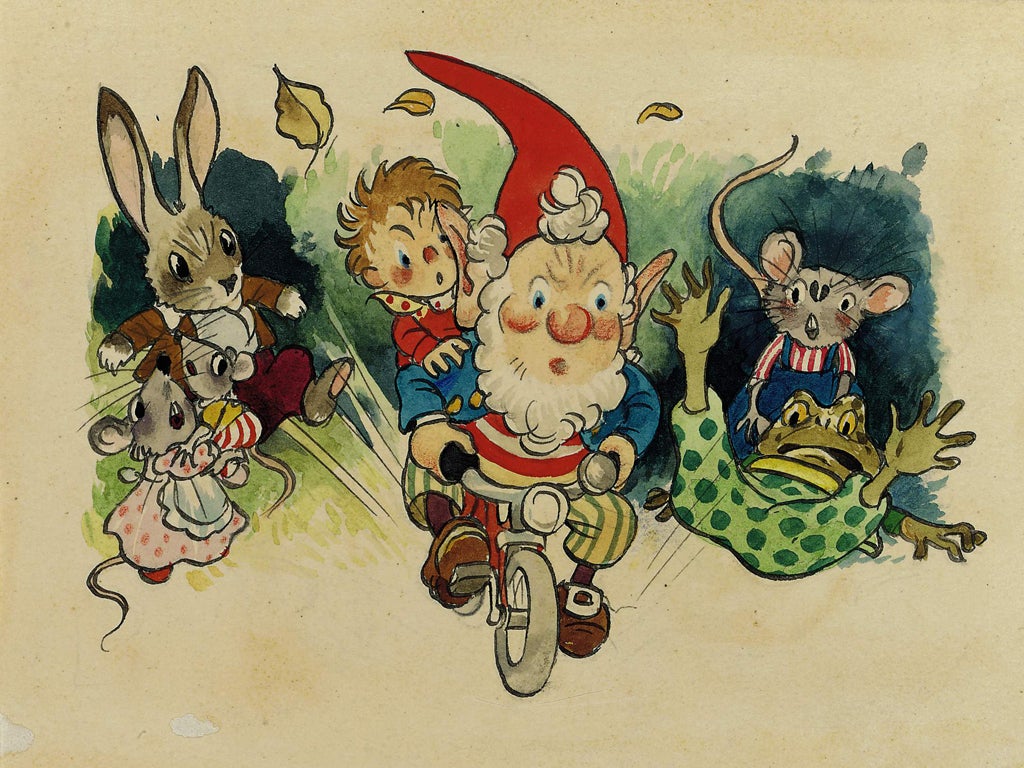
Noddy and Big Ears have nevertheless delighted younger readers for almost 70 years and it all began here. The delicate original illustrations by Dutchman Harmsen van der Beek deserve a greater share of the credit than is usually given.
6. The Secret Seven (1949)
Fractionally less popular than the Famous Five, compared to whom they feel less dynamic and defined, the septet nevertheless had a wide following.
This, the first of 15 novels, capitalised on the promise of the two short stories in which they had already appeared, “At Seaside Cottage” and “Secret of the Old Mill”, to deliver a snowbound old dark house mystery involving a missing club badge and a deaf caretaker.
5. The Enchanted Wood (1939)
Jo, Bessie and Fanny move to a new cottage in the country close to a forest where the trees are “a darker green than usual” and whisper to one another, the topmost branches touching the clouds.
They befriend the weird folk who live there including Moon-Face, Dame Washalot, Mr Watzisname and the Saucepan Man and climb the branches to visit strange new places, notably the Land of Take-What-You-Want.
A leap of imagination drawing on traditional fairy tales, The Enchanted Wood sees Blyton break free from the formula that would define much of her output and present characters worthy of L Frank Baum.
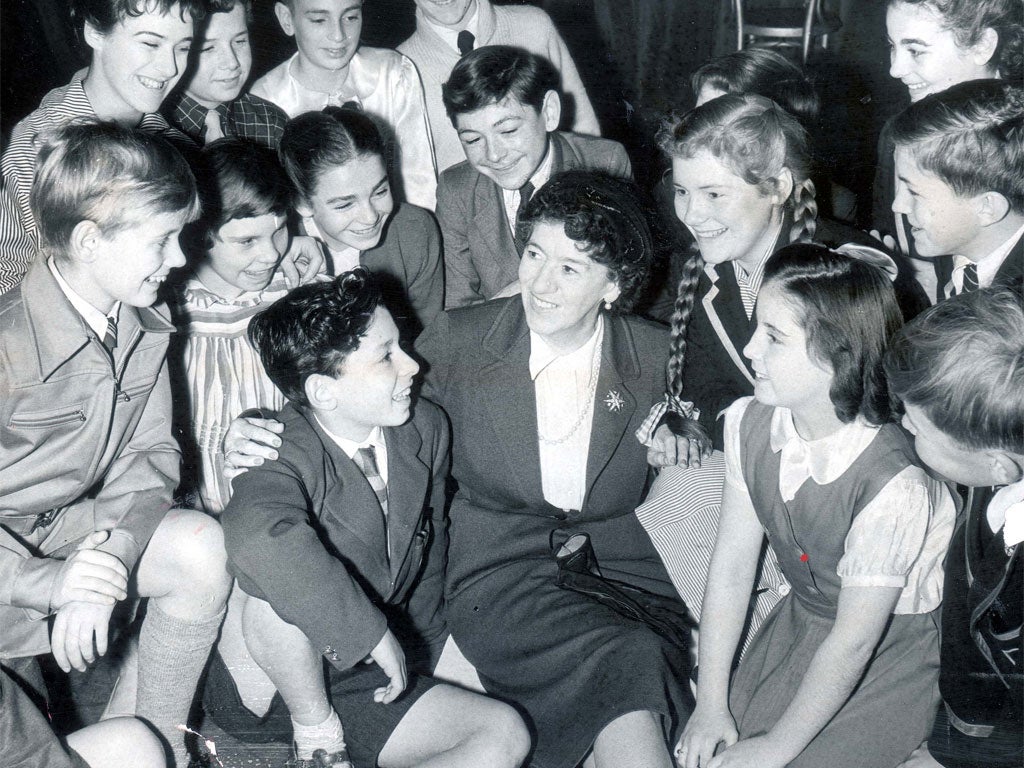
4. Adventures of the Wishing-Chair (1937)
Another exercise in fantasy, the Wishing-Chair novels begin when siblings Mollie and Peter encounter an eerie antiques shop in their search for a birthday present for their mother.
There they find an enchanted rocking chair that sprouts wings and flies the occupant to whichever destination they desire.
After rescuing Chinky the pixie from a giant, the children take the chair to other realms including the Land of Dreams, the Village of Slipperies and Mr Grim’s School for Bad Brownies.
3. The River of Adventure (1955)
The Adventurous Four series began in 1944 and, like the Famous Five, features a recurring gang of child protagonists and their pet (a parrot named Kiki this time) getting into scrapes and righting the wrongs of nefarious adults, often in locations more exotic than the British Isles.
For instance, the third entry, The Valley of Adventure (1947), is set in the mountains of Austria and includes a surprise reference to the Nazis, a rare instance of contemporary events intruding on her fiction.
In this final instalment, Jack, Philip, Dinah, and Lucy-Ann travel to the Middle East and run into a crook pursued by MI6 named Raya Uma en route to uncovering an ancient lost city, a plot with the ambition of Herge’s Tintin and again demonstrating her versatility.
2. The Magic Faraway Tree (1943)
The sequel to The Enchanted Wood sees Blyton expand the scope of that novel with the addition of the sceptical Cousin Dick and new worlds including the Land of Goodies.
The sudden disappearance of the oddballs introduced in the first book and the tree’s invasion by the residents of the Land of Tempers strikes a memorably sinister note.
1. Five on a Treasure Island (1942)
The first outing for the Famous Five sees them set out for Kirrin Island on their summer holidays, hunting for gold lost when George’s great-great-grandfather’s ship was wrecked decades before.
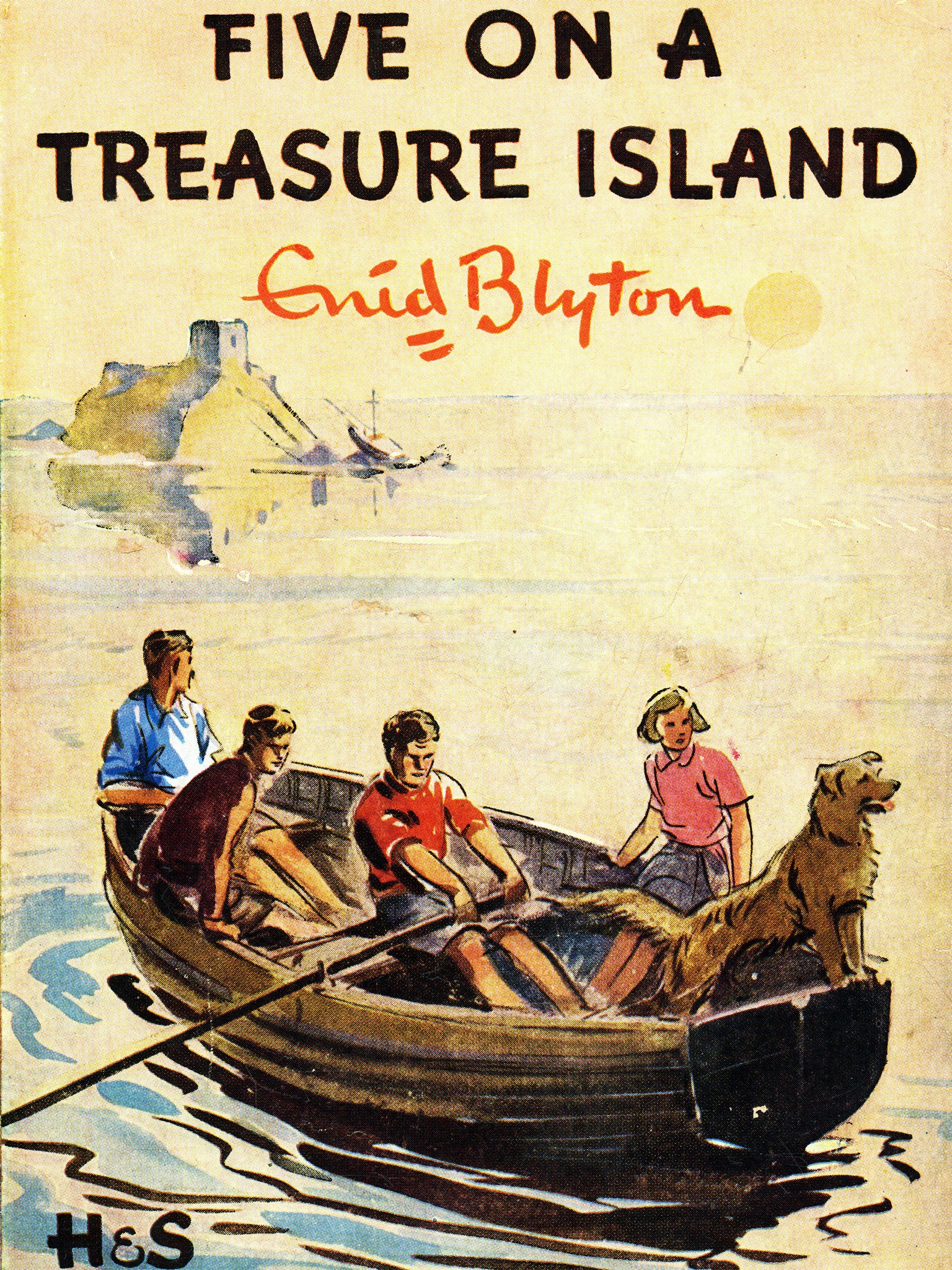
Taking inspiration from Corfe Castle in Dorset and LT Meade’s interestingly similar Four on an Island (1892), Blyton found the perfect vehicle for her talents with this breezy caper.
The first entry in a 22-book series is particularly admired for its natural description, the author’s love of the southern English countryside and coastline there for all to see.







